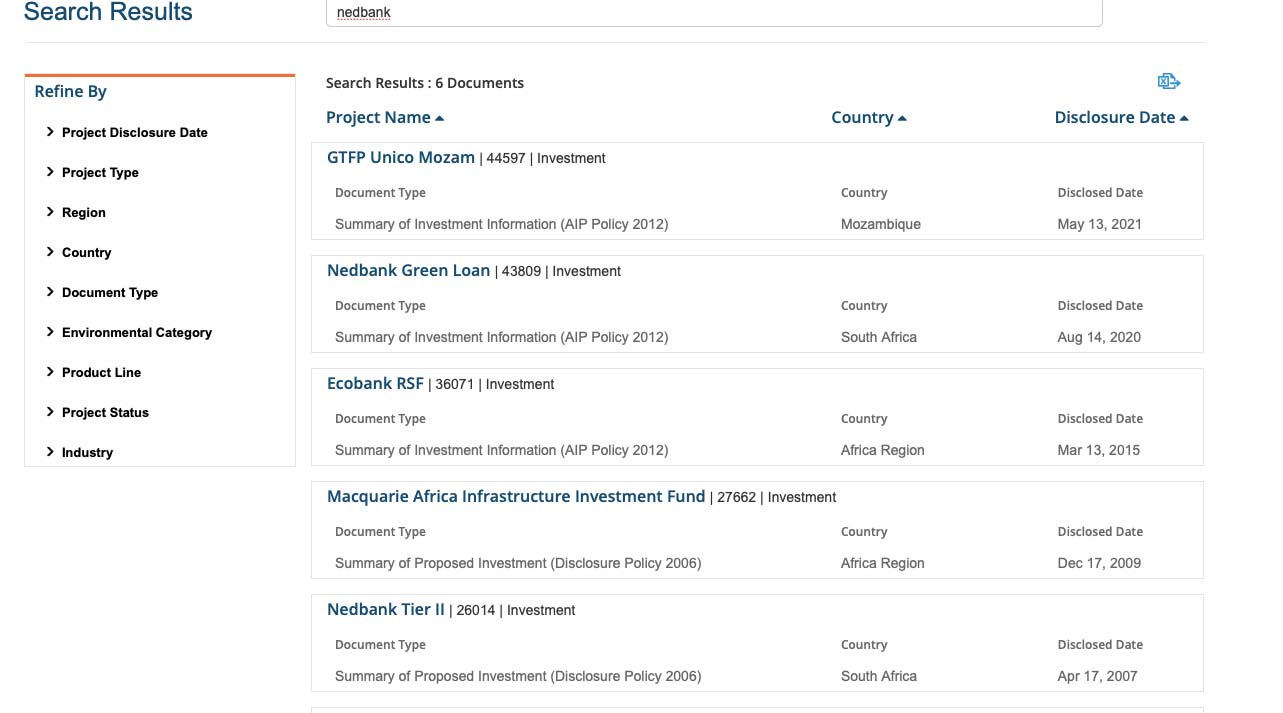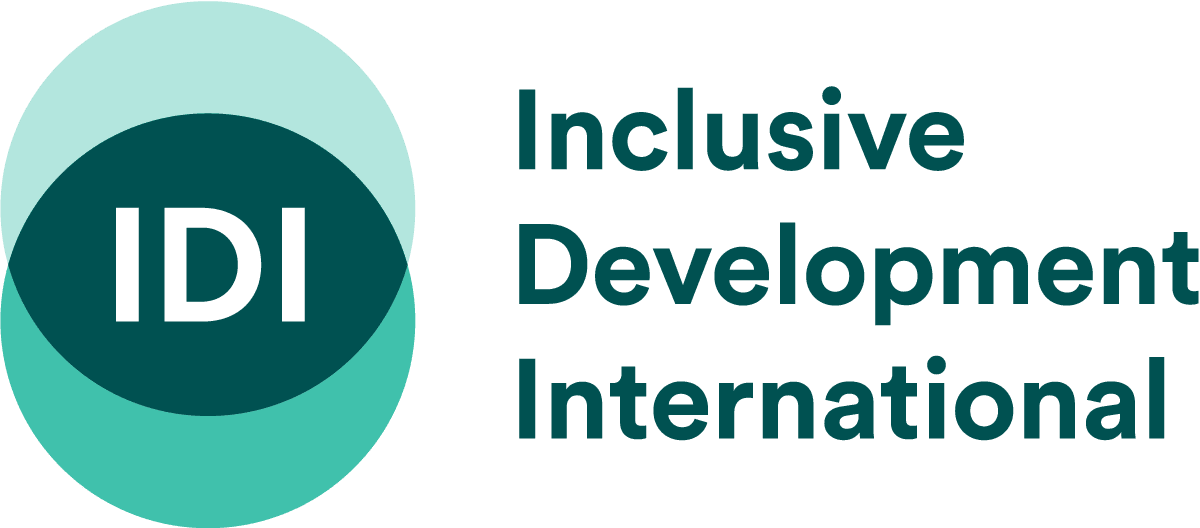Uncovering the Involvement of the World Bank in a West African Gold Mine
In 2017, Inclusive Development International investigated AngloGold Ashanti, a company operating a gold mine in Guinea, in support of communities impacted by the project. AngloGold Ashanti is a South African multinational corporation listed on the Johannesburg, New York, Australian and Ghana stock exchanges.
As part of that research, we identified the company’s key lenders, which are discussed here. After completing research into the company’s investment and supply chains, the final step was to look at whether the company or mine had received support from any development finance institutions, key pressure points for advocacy in any investment chain.
This is how we did it:
1) Searched for direct support from development finance institutions
Our first step was to determine if a development finance institution had provided direct support for either AngloGold Ashanti or the mine. We searched for the terms “AngloGold Ashanti” and the name of the local subsidiary operating the mine, “Société Aurifère de Guinée,” in the project disclosure pages of 15 development finance institutions. (Note: Since then, we have developed the Development Finance Tracker which allows you to search all of these institutions in one place.) We found no evidence that development finance institutions had provided direct support for the company or project.
2) Reviewed list of shareholders for links to development finance institutions:
During our research into the mine’s investment chain, we maintained a list of the company’s shareholders. This is the starting point of a search for indirect support from development finance institutions, which outsource money to financial intermediaries to invest in companies and projects. AngloGold Ashanti has hundreds of shareholders.
We did not identify any private equity funds, which are the likeliest type of shareholder to create an active link with a development finance institution.
Since the mine is a joint venture between AngloGold Ashanti and the Guinean government, there were no other investors in the project that might be linked to development finance institutions. As such, we could rule out the possibility that shareholders created financial intermediary links with development finance institutions.
3) Reviewed list of lenders for links to development finance institutions:
Through our research, we built a list of lenders to AngloGold Ashanti that might be financial intermediary clients of development finance institutions. AngloGold Ashanti had dozens of active lenders, all of which could potentially be clients of development finance institutions. We searched the names of these banks on the project disclosure pages of 15 development finance institutions. (Note: This process has now been made easier with the Development Finance Tracker.)
One lender to AngloGold Ashanti came up as receiving support from a development finance institution: Nedbank, a South African commercial bank. Nedbank had received support from the International Finance Corporation — which is part of the World Bank — according to its project disclosure database:

4) Reviewed the International Finance Corporation’s project disclosure pages:
Nedbank had received multiple loans from the International Finance Corporation. After reviewing each one, we focused on one transaction: In 2007, the International Finance Corporation provided Nedbank with a $140 million loan. That loan was active, meaning Nedbank had not paid it back. This created a financial link between the International Finance Corporation and Nedbank. (The loan has since been closed.) According to the IFC’s project documents, Nedbank could use the loan for “cross-border corporate lending across Africa, including capital intensive projects that support sustainable economic growth.” Because the loan was general in nature, and could be used throughout Africa, it appeared that Nedbank could use it to finance a South African corporation like AngloGold Ashanti.
5) Collected and reviewed information on Nedbank’s loan to AngloGold Ashanti:
6) Searched U.S. Securities and Exchange Commission (SEC) website for more information on the loan:

After reviewing the search results, we found a complete agreement for a loan between Nedbank and ABSA and AngloGold Ashanti signed in July 2015. The agreement included the full details of the $1.4 billion South African Rand loan. We found several key pieces of information in the agreement that helped us understand whether the International Finance Corporation was indirectly linked with the mine:
- Because the loan had a length of five years (page 7), we knew that it was unpaid. Thus, the financial link between Nedbank and AngloGold Ashanti was active.
- The loan could be used by AngloGold Ashanti for “general corporate purposes of the Group.” This meant that there were no restrictions on how the company could use the loan, meaning it could direct the money to the mine in Guinea. In other words, this financially exposed Nedbank to the project.
These two pieces of information were critical. If the financial link was inactive or was for specific purposes that excluded the mine in Guinea, the link would not be worth pursuing.
7) Conducted a final analysis of the two transactions to determine if the International Finance Corporation was likely exposed to the mine:
Through our research, we learned that the International Finance Corporation had provided a general corporate loan to Nedbank in 2007 that was still active. We also learned that after receiving that loan, Nedbank participated in at least one general corporate loan to AngloGold Ashanti in 2015 that was still active. Through these two transactions, we concluded that the International Finance Corporation was financially exposed to the mine through this financial intermediary relationship.
Based on our findings, communities in Guinea affected by the mine decided to file a complaint to the International Finance Corporation’s accountability mechanism, the Compliance Advisor Ombudsman. That complaint was found admissible. Through this process, the communities and AngloGold Ashanti agreed to participate in a mediation process facilitated by the Compliance Advisor Ombudsman. The mediation has led to some positive outcomes for the communities, which you can read about in the third part of this case study:
